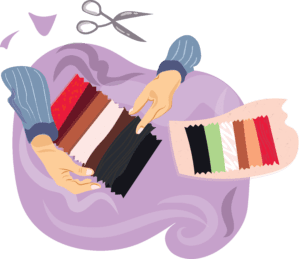The post-pandemic world has gone through numerous changes. Every sector, whether it is health, fashion, education, pharma, etc., has undergone tremendous changes that benefit their sector. Environmental factors of all these sectors have also evolved accordingly to fit the necessity.
The common element that would be of discussion in this article is uniforms. Yes, the clothing we are supposed to wear in certain places. Uniforms are being worn in almost every sector. For example, doctors wear white coats in hospitals, while police officers wear khaki uniforms to work.
Thus, uniforms prevail in most workplaces and educational places like schools and colleges. As the uniform continues to stay, so do the uniform manufacturing companies. Companies like hospital uniform manufacturers, corporate uniform manufacturers, etc., design elegant uniforms of comfort for various sectors. As we continue to wear a uniform, remain a lot of myths and specific facts about uniforms. So let us look at the myths and facts about uniforms and debunk them.
MYTH 1: UNIFORMS DETER INDIVIDUALITY
It has been a talk since the uniforms came into practice. Multiple people agree that uniforms deter one’s individuality. But uniforms tend to confer someone’s individuality.
A doctor gets recognized easily when they wear a white coat.

An advocate gets to be noticed as an advocate only if they happen to appear in the black jacket. Even a ward boy happens to be identified when he appears in his uniform in the hospital.
So as we see, uniforms don’t deter individuality. Instead, it projects or depicts the uniqueness of a person. A person feels and realizes their identity, that is, their profession, by wearing their uniform.
MYTH 2: UNIFORMS RESTRAIN CONFIDENCE
Again, this myth also travels with uniforms from the day of its introduction.
Certain people continue to say that wearing uniforms makes people inferior, which would take a stake in their confidence. These people keep saying that uniforms instil belief in the individual who wears them and make them enter into a round-to-clock working cycle without having second thoughts.
Similar to the first myth, this myth is also the straight opposite of reality. Let’s consider an example. The doctor gains confidence only when he starts wearing his white coat in his clinic, making him feel confident and helping him focus on his profession with clarity.

Uniforms have a kind of psychological value for the individual wearing them. Some people take it wrong, as if the uniforms are imposed on them to make them feel low, which it’s not. The uniforms are made compulsory so that when someone wears a uniform, it gives them the confidence to excel in their profession.
MYTH 3: UNIFORMS ARE NOT UNISEX
In earlier days, when uniforms were introduced, the uniform was designed in common with considering gender quo in knowledge. But now, a lot more has changed, and the manufacturer of the uniforms takes the utmost care in designing gender-friendly uniforms.
For example, hospital uniform manufacturers create women’s uniforms with some clothing in front that covers the chest, giving them more comfort.
MYTH 4: UNIFORMS MAKE PEOPLE SUBMISSIVE
In some organizations, uniforms mark a subordinate position to someone. But that doesn’t mean being submissive. Every sector has its hierarchy, and it is necessary to maintain order for the stable running of the sector. Uniforms can mark the rank in an industry.
Consider a hospital the doctors wear white lab coats, and the nurses wear white or navy blue shirts and pants. Ward boys and helpers might wear green shirts and pants. These uniform colours help us to identify their position in a hierarchy.
But wearing a white coat doesn’t give any doctor the authority to mishandle green-dressed helpers, and the white jacket helps to make good use of the helpers. So the helpers happen to be subordinated, not submissive.
Conclusion:
With modernism, uniforms have continued to upgrade, making the myths about uniforms false. Many uniform manufacturing companies and suppliers continue to produce good quality and comfortable uniforms.
Uniforms develop confidence in the individuals wearing them. Uniforms make an individual realize uniforms’ value and authoritative power instead of dumping the notion of submissiveness. Uniforms define an individual’s identity. Embrace your uniforms; they add to your individuality and profession.




